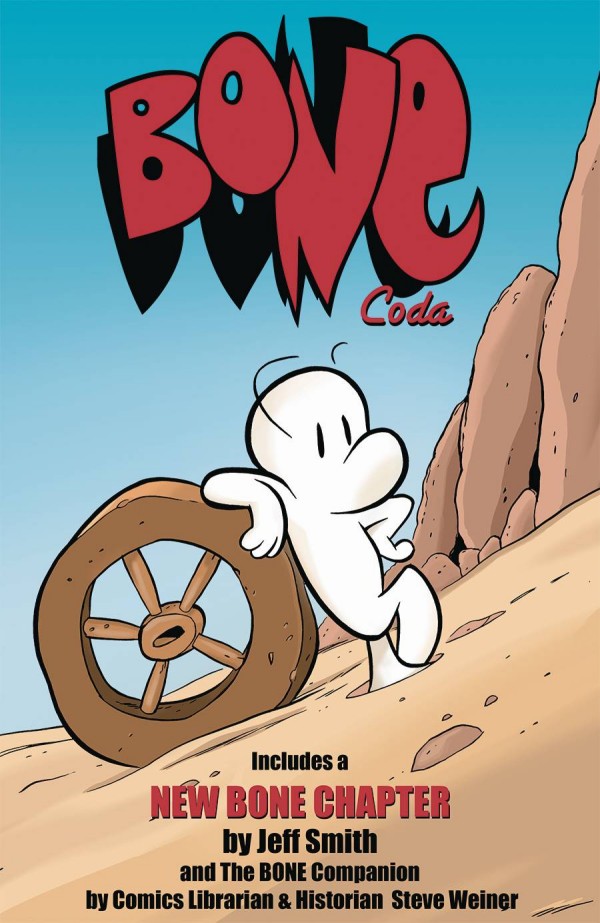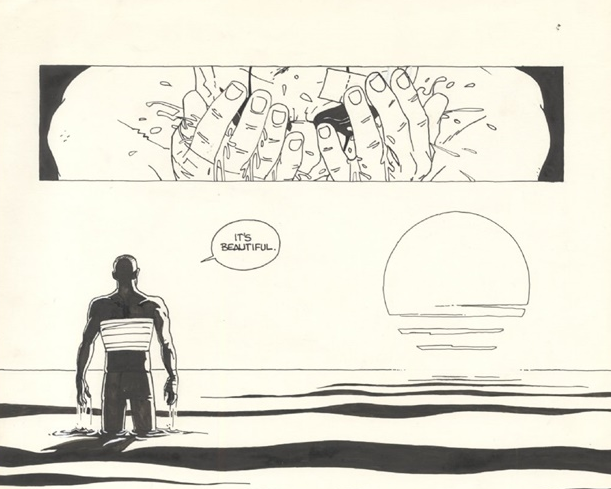Valiant returns Ninjak to the racks this week, courtesy of the incredibly apt team of Jeff Parker and Javier Pulido. The duo combines to create a relaunch debut that is entirely new reader-friendly with enough nods to the Ninjak backstory that long-time fans will feel like they know the character and the world he inhabits. This comic is truly a textbook example of how to relaunch a series starring a familiar, if not necessarily a household name, character. It is a fun, high-stakes adventure story from the start, accentuated by some of the most beautiful pop art panels I’ve seen this side of Mike Allred. Forgive me if I seem hyperbolic, but I’ve always felt first issues offer a specific kind of bait for criticism. Fortunately, Parker and Pulido seem above those trappings.
Javier Pulido’s artwork is absolutely perfect for a book like this, and I, frankly, was taken aback. I haven’t experienced a ton of Pulido’s work, but his art in Ninjak represents a massive leap from my primary experience, his penciling on She-Hulk with Charles Soule. I thought his work on She-Hulk was crisp and innovative, but he brings a different dynamic to Ninjak, one the feels simultaneously both cleaner and deliberately less refined. He seems to be leaning into an exploration of form and line. The panels are clean, but there is a flow to it that makes it feel more alive and less two-dimensional than it first appears, almost like Gilbert Hernandez’s Assassinistas with just a touch of Ditko to punctuate.
Perhaps it’s Pulido’s coloring that helps his art pop off the page in such a way. He didn’t color his own pencils for She-Hulk, and though his art was definitely clean and sharp, the colors added just enough of a dose of house style that the art feels almost too precise by comparison to his work here in Ninjak. Perhaps it's a bit closer to the style he evoked in his work on Hawkeye or Robin: Year One. But still, it feels like there is an experimental step towards a more deliberately avant-garde approach, and I keep returning to his coloring as I scan the pages again and again. The colors are deep and bright, often a shade or two away from the “natural” color, giving the book the trippy, 1960s spy feel that Parker channels so well. Beyond even the coloring, it seems to be the way Pulido almost entirely eschews shading at times that highlights his slightly more experimental line style. The panels become heavy on contrast, the thick colors allowing the geometry to stand out, bringing the lines to the foreground. Honestly, I found, and continue to find, myself staring at the pages just to appreciate the linework, the cleanliness of it, the precision, the way it feels both realistic and cartoony at the same time.
 |
With such a style in mind, Parker begins the story with allusions to the titular character’s backstory with black ops types speaking about the MI:6 Ninja Programme in the dark corners afforded by a pub whilst a nefarious duo with an updated style that hearkens back to 60s mod spies lurks in the shadows. It feels right. It feels like it is all supposed to go together in a way that you can’t tell what came first, the panels or the script. It’s through unity that the team can pace the book so well, and said pacing is precisely where the genius of this book’s construction lies. In the course of three pages - the second two an utterly surreal double-page spread that evokes a mixture of Clowes, Ware, and Allred - Pulido and Parker establish both the aesthetic and the tone for this issue. It’s familiar enough that you get the gist - it’s a riff on the hip spy conceit with sharp-dressed spies cavorting in the spaces in-between - but fresh enough and so impeccably executed that it feels new and exciting. Parker drops all the exposition necessary in those three pages. You don’t have to have read a single issue of Ninjak, let alone anything Valiant, to get where this story is coming from. To some degree, Parker relies on the spy-meets-black ops trope with an agent gone rogue as the defining element, but it’s easy to dismiss given the tight pacing of the book. Parker gets the backstory out of the way immediately, and after turning the first page, the reader should be in the essential state of mind for a spy thriller - ok, I understand what is going on here but also what is going on here?
And with that, the direction changes. We’re transported to Turkey, where Parker and Pulido recreate a version of the Jamal Khashoggi assassination, fortunately allowing Ninjak to neutralize the threat before this journalist suffers the same fate. By tapping into a well-known event, Parker again trims the fat of unnecessary exposition. Instead of wasting panels setting up a scene, Parker channels a horrific event that immediately connotes a sense of panic in the reader, adding a depth of righteousness to Colin King and establishing a moral compass for the story. Again, Parker is certainly employing familiar conceits, but he does so with a degree of precision that you can tell he’s using the concept as simply the bedrock for his story. We shouldn’t be too surprised with this type of execution, though. Jeff Parker made a name for himself modernizing famous characters. But he almost works backward to some degree with this new issue of Ninjak. Certainly, he’s working with a modern character, and he’s telling a contemporary story, but in pairing with Pulido, he channels a retro feel.
Following that setup, Parker briskly moves us through the core story that will build the first arc of the series. Intelligence has been compromised, and spies are forced to flee for their lives. Colin King finds himself in the center of it. Used to being an offensive agent, he finds himself on the run, forced to play defense as he will investigate what forces set up this current situation and the requisite cliffhanger that closes out the issue. And that's that. I don't want to seem like I'm putting down Jeff Parker when I say that nothing is particularly shocking in this issue. Quite the contrary - it's the run the ball up the middle straight-up approach that makes this issue work. There isn't anything to distract from the story or Pulido's exceptional panels. The story is action-centric, and Parker dispenses quickly with the exposition and focuses the chunk of the book on high-stakes action. It's a fun first issue, one that makes picking up the second issue more of a necessity than an obligation.
Musing on this book caused me to think about where Valiant is as a publisher. It's hard to question Valiant's resilience. While countless publishers have tried to catch the next big thing, Valiant seems to know how to stay the course better than most. Other shared universes have come and gone, and big names like Kyle Higgins, Geoff Johns, and Todd McFarlane have thrown their proverbial hats into the ring as well. But Valiant just maintains. They don't seem to fluster easily, and every time it seems like Valiant's exhausted its supply, a new series debuts to bust that misconception. In particular, I'm thinking about the choice of creative teams for both Ninjak and the most recent Shadowman series, and I can't help but consider the parallels and thus the implications for what that would mean for Valiant moving forward. Both series feel like they're leaning into a sure thing while allowing for a degree of experimentation that sets the books apart from every other genre book on the stands. We know Jeff Parker's track record for modernizing concepts. He's adept at all things retro, be it Flash Gordon or Batman '66. Thus, he's a strong bet for a pulpy take on Ninjak, much in the same way Cullen Bunn's horror chops make him an ideal fit for Shadowman. Utilizing writers synonymous with the style and genre allows for each artist to lean a little more into the experimental realm, and I hope that is something Valiant either considered beforehand or has recognized the potential of and continues to employ such a concept. Both Pulido and Bunn's artistic partner, Jon Davis-Hunt, are the type of artists who eschew house style. In a flooded market, I think this is a solid strategy.










